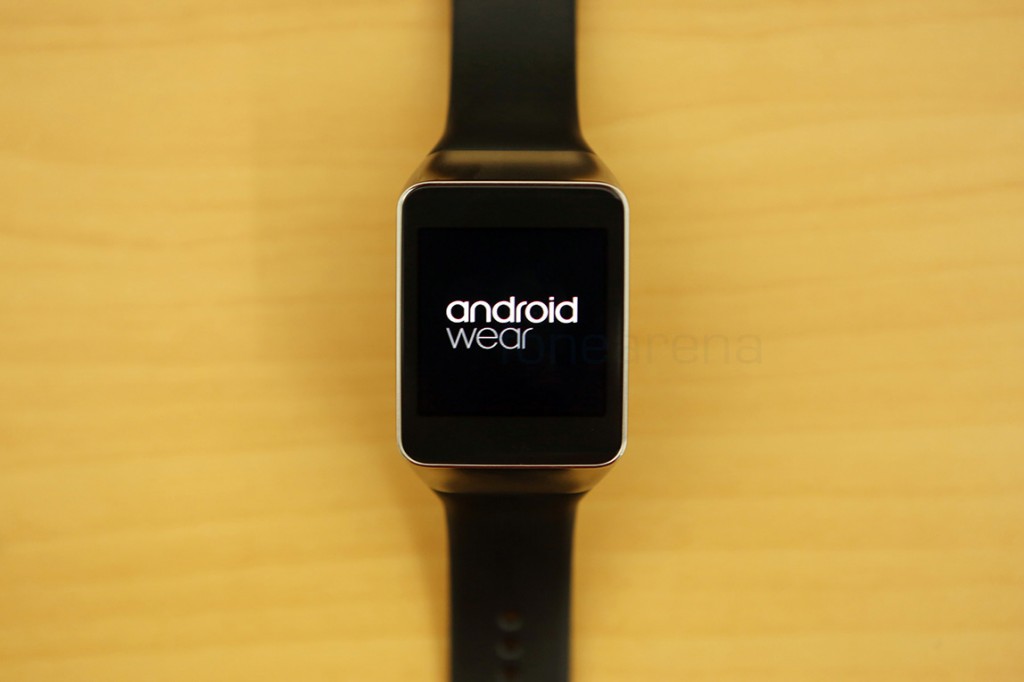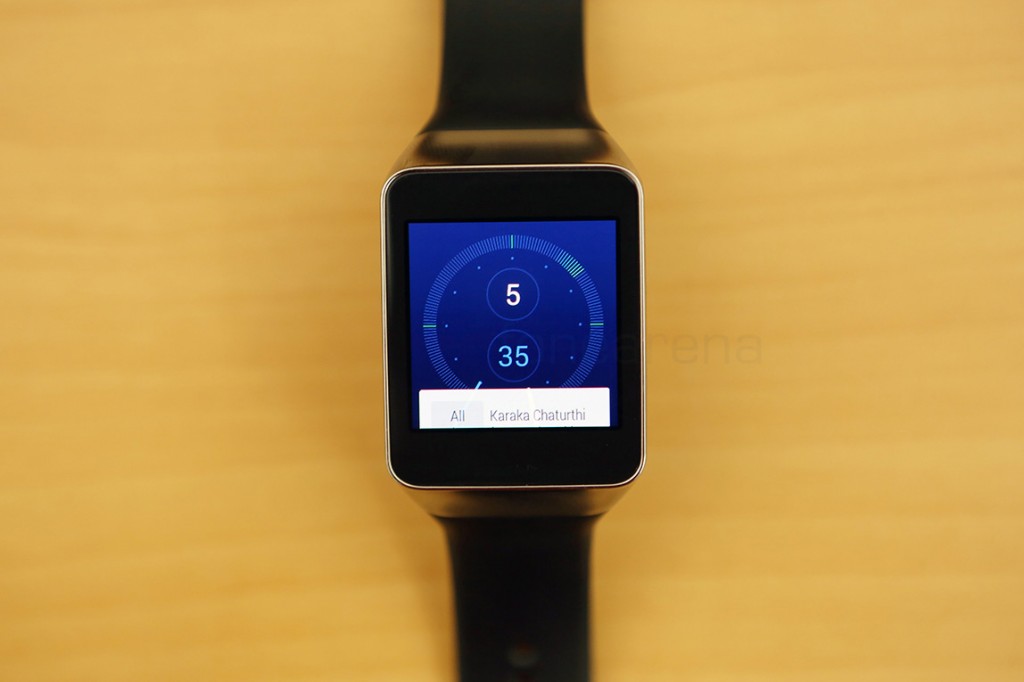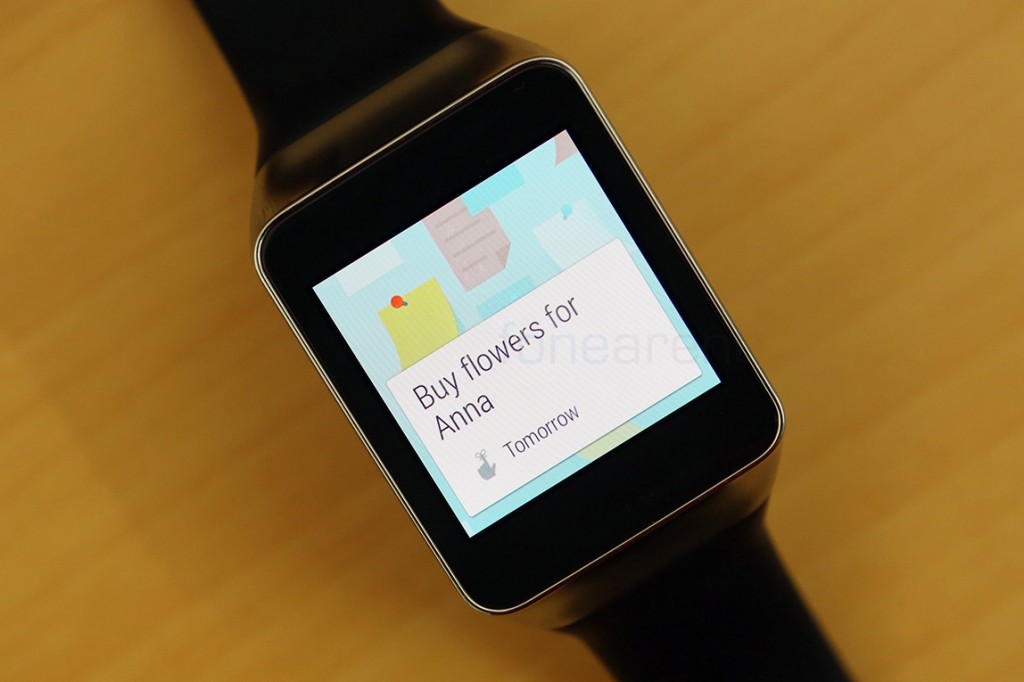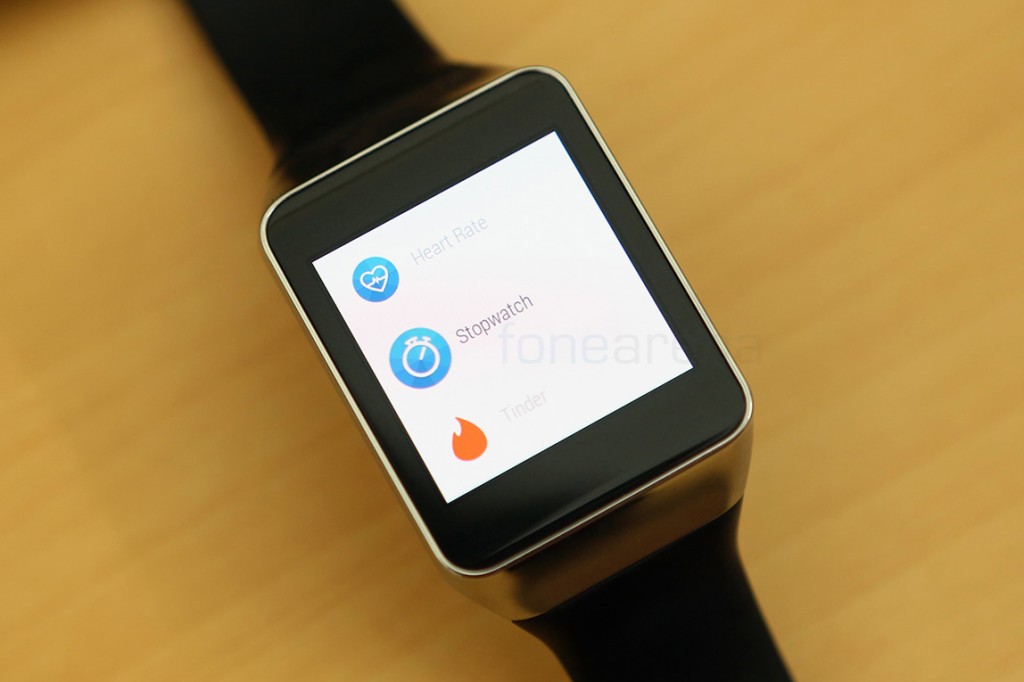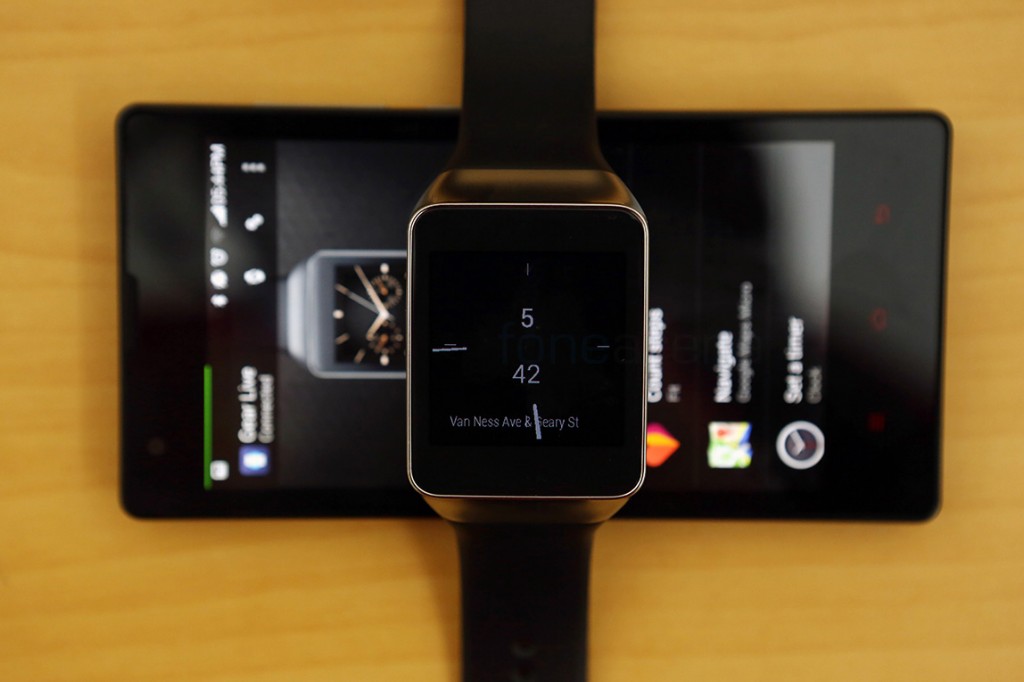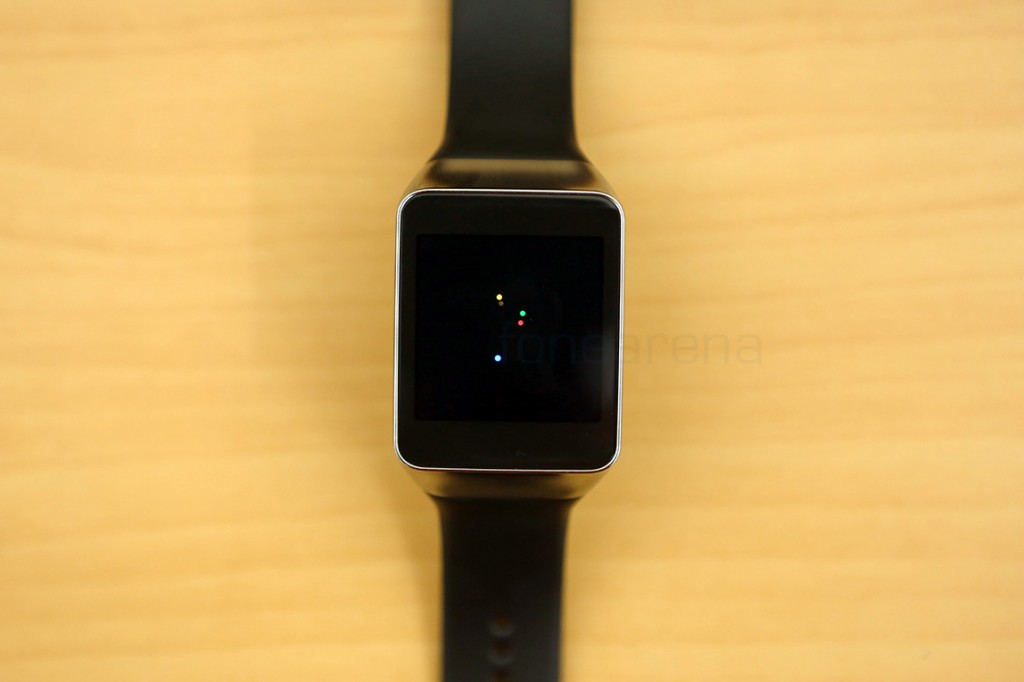In the current technology landscape, wearables are touted as the next big thing. It succeeds the smartphone, in one way or the other, so a lot of companies that bet on the smartphone are betting on the smartwatch too. This includes Apple, who unveiled their idea of a Smartwatch, with a focus on making tech fashionable, rather than just utility-focused. The utility is achieved with software, and that’s where platforms come in to play. Just like Smartphones, there is already a battle of ecosystems brewing, in which Google is obviously a major player. As we had explained in our Pebble review, Smartwatches are basically companion devices to our Smartphones and it actually makes sense if both of them are tied together with highly coherent software. So naturally, a Google-blessed platform will work great with Android. Enter Android Wear.
The Idea
Android Wear is Google’s second take at wearable technology, after the experimental Glass. While glass is intrusive for many, the inherently less inhibitive wrist watch makes for a better target, when it comes to adoption. And for Google, Wear actually makes sense, because Android is indeed the biggest smartphone platform and a companion device naturally gains from its omnipresence.
The main objective of Android Wear is to provide at-a-glance information on your wrist, with instant notifications from the phone. The usual notifications are just alerts from all the apps that you have configured to notify you on the watch while contextual notifications is, of course, Google Now. Yes, all those useful cards from Google Now appear on Android Wear similarly, as swipe-able cards. Be it alerts for the next calendar item you’ll miss, the upcoming Amazon delivery you ordered or even just weather that you can check outside the window, everything is Google Now.
Since Google Now is tied in, you also have the “Ok Google” trigger command with complete voice command support. This is enabled thanks to the always listening microphone on all the Wear watches. You can do a quick Google search of anything, but it depends on the phone for proceeding with further detail.
This is where Android Wear becomes too dependent on the phone for many things. By design, it makes sense, as the small window is not really ideal for browsing through information, but that definitely makes Wear highly “at-a-glance”-centric. You have standalone app experiences through miniature Wear apps installed on the watch though. These are installed when the Android app itself is installed on the phone, as the Wear companion part is bundled within. But the microphone is not just for voice commands, it’s for voice input too, which third parties can tap in. And frankly, the voice recognition works great, and just like Google Now. This partially negates the high dependance on phone, and lets you respond to messages without the hassle of bringing up your phone.
The Interface
Android Wear has a simple and easy-to-learn interface, especially if you are already familiar with Google Now. The main screen is the watch face, which is preloaded with different designs from the manufacturer. There is an API in the works, to let developers make watchfaces, but it hasn’t happened yet. There are two screen modes to the watch face, one is the usual color version while the low-power “Always On” mode displays a minimal version of the same watch face in monochrome. This is one of the power saving methods that Google employs to provide an always-on screen, which is mandatory for any watch, in our opinion. A swipe down on the watch reveals the date, the battery percentage and the mute button, to stop notifications, if you are annoyed or just want to snooze them for a while. Good thing is that the notifications you dismiss on the watch are also dismissed on the phone, which is naturally the advantage of software coherence we earlier talked about.
A tap on the screen takes you to the “listening” Google Now screen where you can spell out searches or give commands. You can also trigger the “Ok Google” command by voice, as already mentioned. A swipe up on the Google Now screen takes you to a messy list of example commands and then at the bottom, you have the “Start” button that takes you to the installed apps, settings lets you configure and manage the watch and there are options for setting some alarms and so on. Basically, this list is messy, but with a long press of the hardware button in most Android Wear watches, you can get to the settings quickly.
Back at the main screen, a swipe up reveals the first card in a stack of Google Now cards. You can dismiss it with a right swipe while you can interact with it with a left swipe, if it has any actions. These actions are usually the buttons available with rich notifications, for example, you can directly archive mails from the watch, instead of doing it on the phone. This is quite useful considering the flexibility of Android. Some third party apps support even voice input, like for example, Whatsapp, which can reply to messages right from the watch, just like Hangouts.
But it’s not just notifications and actions, but remote experiences too, like for example, music and the camera. You can control music from your watch and take photos on the phone, by triggering the shutter from the watch. The music remote is a no-brainer but the remote camera shutter helps you take group shots easily, which is quite interesting.
When it comes to the overall experience of the interface, Android Wear feels like it needs a revision. It’s based on strong principles of material design and the learning curve is not too steep thanks to Google Now cards, but we feel the flow is not well thought out. A right swipe from the edge of the screen, which is usually thought of as a “back” gesture, takes you directly to the watch face, with no options to go one level up. This is sometimes frustrating, like when you are in an app, and you want to go to another, there is no other way than going to the watch face, going to the end of the messy Google Now page menu, choose Start and choose a different app. We hope to see big changes in the subsequent versions, meanwhile, there are already third party app launcher solutions. For a first version though, the interface is alright, but we hope it changes for the better.
Apps
There are already many third party apps for Android Wear, which is really promising for an early platform. Third part apps like Tinder, Duolingo and many others already have mini apps, which more or less provide restricted functionality that makes sense on a watch. For example, you can finish some voice-activated tests on Duolingo, if you are too lazy to pick up the phone. You can also swipe away the profiles you like on Tinder, which is actually a really good implementation for a watch. In the future, you will be able to call for a Uber cab from your watch and rate the driver. With ample amounts of storage and decent processing power, the small screens turn more useful, as quick small windows into your smartphone apps.
All you have to do, to install the Android Wear app, is to download the latest version of the app you want, which has the Wear binaries bundled. The app installs itself through the Android Wear client on the smartphone. Talking of the client, the Smartphone app is very basic, as, once setup, there is little you can do. There is a separate section for apps that support Android Wear on the Google Play Store, which you can access as a shortcut from the app. There are quite a few options to set default apps for specific functions like monitoring the heart rate or steps, as there can be multiple apps that do that. On the same note, these are the OEM-specific apps, like for example, Samsung has its own heart rate monitor app for its Gear Live smartwatch. Currently the app list is gaining a lot of new entries, with app extensions and remotes, but the killer app is still missing. The internet and its services were the Smartphone’s killer app, what could it be for Smartwatches? Your guess is as good as mine.
Internet of things
Android Wear, as a platform, is part of the whole “Internet of things” movement, so it naturally comes with its own solution for interfacing with smart devices, other than smartphones. Google has already announced that the Nest thermostat will be the center of its home automation strategy and one of the main input devices will be Android Wear smartwatches, with support for voice commands. Without a standardized open API, the IoT movement will not gather much steam but this makes it one of the more compelling reasons to get a Smartwatch.
Fitness
All the Android Wear watches are equipped to track fitness data, with all the sensors available to the platform. Google has even released a Fit SDK, for developers to harvest data from Android Wear and translate them into useful health inputs. Most Android Wear watches have a heart rate monitor, which allows deeper analysis into your health. But again, based on proprietary standards, the health side of things too, is yet to take off. Meaning, while there are enough apps, the usage has not gone mainstream yet.
Conclusion
Android Wear is Google Now, at-a-glance. If you are a heavy user of Google Now, you will find Android Wear plenty useful, with you not missing many notifications like you used to. There is also the additional advantage of contextual alerts that remind you to order a cab at the right time or find a way around congested traffic on the way back home. But it’s not the software, it’s the hardware, which is holding Smartwatches back, generally. In its current woeful state, watch hardware that supports Android Wear requires you to invest a sizeable sum of money for a device that doesn’t even last a day in battery life, useless in bright outdoors and has limited use cases.
Android Wear is a great idea, but it has to do a lot more, in tandem with proper hardware, to make the overall product more appealing. This is just the start though, so let us look forward to the subsequent updates to the platform, to see where it goes.

